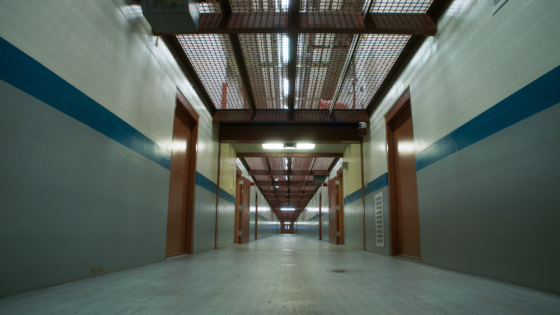Watch Latin American Music Awards
In “The Strike,” directors Joebill Munoz and Lucas Guilkey chronicle a 2013 prison hunger strike that changed imprisonment policies across the U.S.
The doc tells the story of America’s supermax prison Pelican Bay, which opened in 1989 and was designed specifically for mass-scale solitary confinement. For decades, the California prison held mostly Black and Brown men alone in tiny cells without windows for years or sometimes decades based on questionable evidence. In 2013, 30,000 California prisoners went on hunger strike in an attempt to end indefinite solitary confinement and regain access to the general prison population.
Munoz and Guilkey’s 86-minute docu features interviews with inmates who spent decades of their lives in a concrete tomb. In addition to inmates, Munoz and Guilkey sat down with state prison officials, prison designers and bureaucrats to detail the history of how and why the state came to keep so many people in long-term isolation.
Variety has been granted exclusive access to the trailer (below) for “The Strike,” which will have its world premiere in Hot Docs Film Festival’s Art of Resistance section.
“First thing you notice about Pelican Bay?,” a former inmate says in the trailer. “It’s quiet.”
Variety spoke to Munoz and Guilkey about “The Strike” ahead of the film’s Hot Docs premiere on Sunday.
How did this project come about?
Guilkey: In 2013, I volunteered to make an online video to raise awareness about the strike. I met the families of the hunger strikers, mostly women from Los Angeles who saw themselves as the voices of their brothers, fathers, uncles and sons, and used every bit of their savings to make the 12-hour drive to Pelican Bay. After meeting family members of the strikers, I said, “This story deserves to be a feature documentary.” I met Joebill in grad school and in 2019 we started filming.
In the doc, we meet inmates who were in solitary confinement for many years but we are never told why they are in prison in the first place. Why did you decide not to include that information?
Guilkey: The reason people were sent into solitary confinement did not have anything to do with the crime that had them sent to prison. As journalists we want to provide the context – social, historical, political, personal – for everything that’s happening. But we also want to honor the fact that people are not defined by their worst moments in their lives, which is a strong ethic in the formerly incarcerated people community. Ultimately, we were interested in this question of, is the system committing a crime? Is the system committing a human rights violation? And that’s the fundamental question of the film.
You included interviews with not just the prisoners but also the people responsible for putting them in solitary confinement. Was including both sides always in the cards?
Munoz: Yes. We set out to try and tell, not a definitive story about the California hunger strikes and solitary confinement because that would require volumes of books, but as close to that as we could. As journalists we are curious to know the logic and the inspiration behind California’s decision to build this prison for solitary confinement and fill it with thousands of people. What was that process like? So the people to best speak to that were the people who created it.
You interviewed many men soon after their release from solitary confinement. Did they agree to talk right away or did it take some convincing?
Guilkey: We had built these connections with people who were (close to them), so as the men started being released from solitary and eventually from prison we were able to gain access and do those interviews.
You filmed inside Pelican Bay. How did you get that access?
Munoz: Pelican Bay these days is like a museum. It’s nearly empty. So we went in there and they were like, “Film whatever you want.” It was a real mind blowing experience for us.
How did you finance the film?
Munoz: Independent funders and grants. The Sundance Institute Documentary Fund was really helpful. We also went to pitch forums. It was a lot of cobbling together funds.
Did you participate in the Hot Docs Pitch Forum?
Munoz: We didn’t do the Forum. This is our first time at Hot Docs.
Source Agencies



